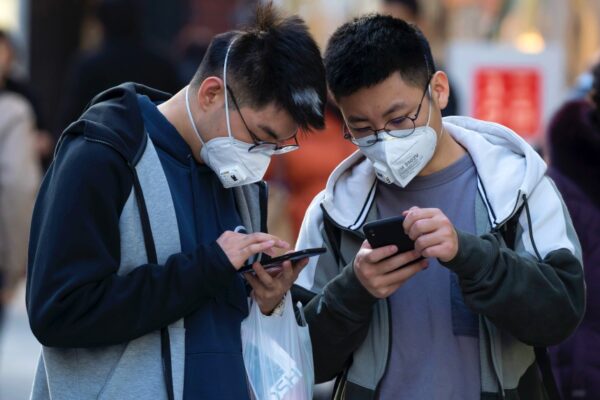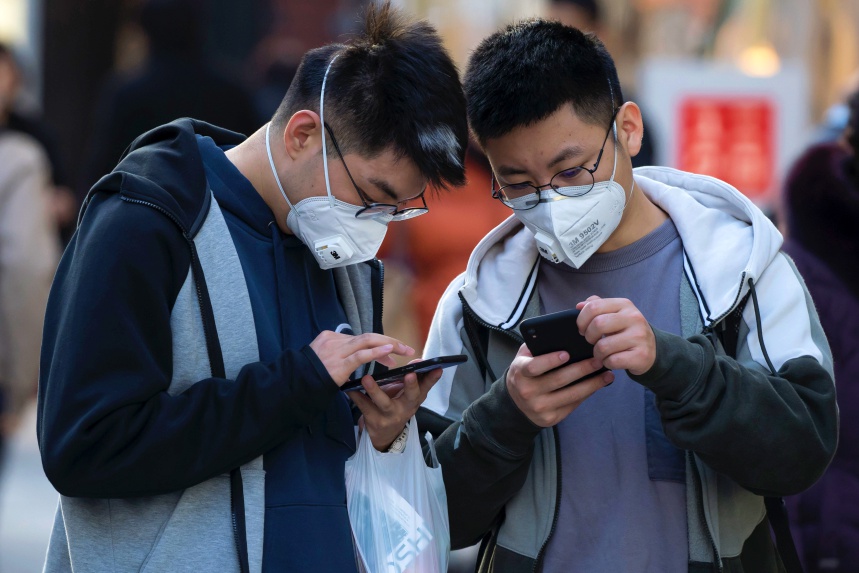Capitalist governments everywhere are exacerbating the crisis and damaging public health systems
Vincent Kolo, chinaworker.info
The novel coronavirus which causes the disease Covid-19 is still spreading rapidly, with 90,000 confirmed cases and over 3,000 deaths. The epidemic is now advancing more quickly outside China than inside the country, if the Chinese regime’s official announcements are to be believed. The daily increase in infections in South Korea has overtaken those in China. The biggest overseas US military base – Camp Humphreys outside Seoul – is among the institutions locked down due to the outbreak.
The Japanese government has ordered all schools closed for at least the next month, affecting 13 million students. In Italy, now with over 1,700 cases, eleven northern towns are under ‘Chinese style’ quarantine.
Across the world shutdowns and cancellations are the new normal, including Islam’s two holiest shrines in Saudi Arabia and China’s once-yearly National People’s Congress, which was originally scheduled to open this week. Xi Jinping is insuring the world’s richest ‘parliament’ is not exposed to the danger of infection even as his regime is straining every nerve to restart the economy and get workers back into the ‘world’s factory’.
Another dictatorship, Iran, is presiding over one of the most alarming flare-ups, with close to 1,000 cases officially reported. This figure is widely dismissed as unrealistic. The chairman of the Tehran City Council said that there might be between 10,000 and 15,000 infected in the country. Even the country’s deputy health minister under dramatic circumstances tested positive for the new coronavirus after giving a press conference at which he was visibly unwell.
Read more ➵ Coronavirus: fighting the pandemic is a class issue
The outbreak is still only classified as an epidemic rather than a pandemic by the World Health Organization. This reticence, and the WHO’s general handling of the emergency, has provoked much debate. Covid-19 already meets two of the three criteria for a pandemic identified by the US Centers for Disease Control and Prevention (CDC), in that it spreads between people, and it can cause death. The third criterion is that it has spread worldwide. Strangely, and perhaps reflecting political pressures and the desire to avoid “panic”, the WHO is balking on the last point despite the fact that over 60 countries now have reported infections.

Stock markets infected
After being in complete denial during the first six weeks of the outbreak, despite glaring evidence that China, the world’s second largest economy, had ground to a complete standstill, the penny has finally dropped for Wall Street and global stock markets. Actually, its around seven trillion dollars – half of that sum on the New York Stock Exchange – which has been wiped out in the past week. The world’s major stock markets, including New York, lost 10-12 percent in one week – the worst showing since the 2008 financial crisis and the fastest ‘correction’ on record.
This is panic of historic proportions; with short-sighted capitalist politicians such as Trump in disbelief at what is happening as a market meltdown and global recession become serious possibilities.
“The hopeful narrative about 2020 heralding a modest rebound in global growth now lies in ruins,” notes the former head of the IMF’s China Division, Eswar Prasad, in the New York Times (1 March). “Europe stagnated and Japan’s economy shrank in the last quarter of 2019, even as China and India were losing momentum. So this year was already off to a rocky start. Now, the coronavirus has put the world economy in survival mode. The spread of the virus is hurting travel, trade and supply chains worldwide.”
Trump in particular pinned his hopes (for a continued bull market translating into re-election in November) on Xi Jinping and the Chinese dictator’s unprecedented and draconian measures, including the world’s biggest ever quarantine, to stop the spread of the viral epidemic. This has not happened.
Two weeks ago Trump told a gathering of state governors: “I had a long talk with President Xi – for the people in this room – two nights ago, and he feels very confident. He feels very confident. And he feels that, again, as I mentioned, by April or during the month of April, the heat, generally speaking, kills this kind of virus. So that would be a good thing. But we’re in great shape in our country.”
This sort of blindness and wishful thinking was exactly what led the Chinese authorities into a whole series of errors in December and January, which allowed the epidemic to take hold in China .
Biggest bubble
Wall Street’s delayed realization of the potential destruction that the epidemic can cause is only part of the story. The current financial mayhem was long expected and could have happened anyway, without the trigger of Covid-19. That’s because stock markets, especially in the US, represent the biggest financial bubble ever seen. It’s bigger even than the US housing bubble in 2006. With the epidemic, and the collapse of economic activity in China set to ripple across the world, the speculators now fear judgment day is at hand.
In the next days there will be massive focus on central banks, especially the US Federal Reserve, to see if they can pull a rabbit out of the hat by unleashing more stock market welfare, by injecting even more credit into the financial system to reflate the bubble. There are serious concerns, however, based on the unprecedented loose money policies of central banks during the past decade, that their toolbox may be empty.
Trump’s administration is discussing new tax cuts, and even lowering some of its China tariffs, in order to calm the jitters of the capitalists. The president has resumed his campaign of pressure on the Fed to further cut interest rates, demanding the US should go one better than Japan and Europe: “We should have the lowest interest rates”. Fed chairman Jerome Powell has indicated preparations to intervene in order to calm the stock market.
Many economists are skeptical. While seemingly endless rounds of ‘QE’ money-printing has succeeded, by and large, in staving off outright recession in the past decade (at the cost of inflating the current bubble on stock markets), this time could be different. The epidemic is still spreading, closing down economies in its path. Rate cuts won’t motivate shoppers to venture out in the midst of an epidemic or reconnect severed global supply chains.
Repeating mistakes
Trump’s advisers are even framing the epidemic as a “hoax” concocted by the Democrats to sabotage his re-election hopes. The president has accused sections of the media of “doing everything they can to instil fear in people”. The complacency of the US government is exemplified by the remarks of Trade Secretary Wilbur Ross who predicted the epidemic in China, “will help to accelerate the return of jobs to North America.”
In this way, the US administration’s response to the crisis is to repeat in a somewhat different form all the mistakes of China’s autocratic rulers, who ignored evidence, wasted precious weeks, misinformed and lied to society, and vilified anyone who tried to speak out.
Contrast the urgency with which Trump and other capitalist politicians are rushing to Wall Street’s bedside, promising to do everything in their power, with the way the same politicians have reacted to the public health emergency. Public hospital systems around the world have been devastated by cuts and neo-liberal shock therapy. Almost 30 million adult Americans lack medical insurance because of the high cost and a 2018 University of Chicago poll showed 44 percent of sick or injured people didn’t go to see a doctor.
Wave of wage cuts
As the coronavirus outbreak spreads so too is a wave of corporate retrenchments, wage reductions and enforced leave without pay. In China, most workers have lost pay during the unprecedented lockdown of the past six weeks. Migrants (from poorer Chinese regions) who make up the vast majority of workers in construction, manufacturing and many service sectors, do not in most cases have job contracts, pensions, unemployment or medical insurance. These workers are bearing the brunt of the epidemic in China, without access to hospital treatment in many cases either due to the high cost or due to hukou (internal passport) rules.
But many US workers also face the reality of going unpaid under eventual quarantine restrictions. According to the Center for American Progress, 73 percent of part-time workers in the US are not entitled to even one day of paid sick leave. The Guardian (28 February) reports that during the 2009 outbreak of H1N1 swine flu, around one-third of American workers did not take time off from work despite falling ill, which in turn led to as many as seven million additional infections. The same newspaper reported the case of a Miami resident who went to get tested for the coronavirus in January after returning from a trip to China. He was billed $3,270 for the tests!
Clearly, the US working class is very poorly protected should the Covid-19 epidemic take hold, something many experts including at the CDC believe is a question of when rather than if. Trump’s policies have further weakened these defences, by cutting funding for the CDC by 16 percent and the Department of Health and Human Services by almost 10 percent in his latest budget proposal. Trump abolished a position in his National Security Council to oversee responses to pandemics. He has also proposed a $3 billion cut to global health programs, including a 53 percent cut in funding to the WHO.
China slumps
From China, where it originated, the epidemic has caused a historic economic and political crisis. The collapse in production of the past six weeks has been much worse than the Chinese dictatorship had envisioned and looks increasingly unlikely to be followed by a V-shaped rebound. Recently released official and unofficial data confirm a very deep slump, not only in manufacturing, but also and even more severe in services and construction. Services account for over half of China’s GDP.
It now seems inevitable that GDP growth will be dragged into negative territory for the current quarter and possibly the following quarter, depending on the epidemic’s trajectory. ANZ predict a two percent contraction in China’s first quarter GDP, while PIMCO, a hedge fund, are forecasting a six percent drop. This exceeds the collapse during the global financial crisis of 2008. A quarterly contraction would be the first time since the Cultural Revolution of the 1960s.
Read more ➵ China’s dictatorship ignites massive coronavirus backlash
Across China workers are stranded and trapped by travel and quarantine restrictions, in addition to those who are staying home through fear of catching the disease in a country where medical debts have pushed many households back into poverty. Xi Jinping has shifted focus from epidemic fighting to exhorting a nationwide resumption of “full production and normal life” in all regions except Hubei and Wuhan, the epicentre of the outbreak. But this summons has met with mixed results, with the dictatorship and China’s many-layered party-state machine inflicting more damage upon itself.
“The patchwork of conflicting rules that emerged from the fight against the [coronavirus outbreak] has produced hundreds of fiefdoms, making it next to impossible to move goods or people across China,” exclaimed a spokesman for the European Union Chamber of Commerce in China.
While state-controlled media is reporting that “over 90 percent” of state-owned enterprises have resumed production, many believe the real figure is much lower, with most companies only achieving a partial resumption. According to ANZ the Chinese economy was operating at 20 per cent capacity, with about 50 per cent of workers back at their posts as of last week.
Orwellian state
“This crisis has caused a fatal blow to Xi Jinping’s personal image,” explains Beijing-based commentator Wu Qiang. “For a long time to come, the public will continue to doubt him, and this doubt is irreparable,” he told the New York Times.
While the battle against Covid-19 is far from over in China, sensing the very real danger to its rule, the CCP regime is further strengthening its repressive armoury and Orwellian surveillance state capabilities. The latter – which not only failed to warn society of the new coronavirus but actually stifled the warnings – is being further reinforced today in the name of fighting the epidemic. Technology, including new smartphone apps, Big Data and AI are being used as tools of social and political control, with foreign “democratic” governments closely watching and seeking to copy at least some of the Chinese methods.
A self-assessment phone app devised by an Alibaba subsidiary is being enforced in 200 Chinese cities. Every citizen must diagnose themselves, entering any suspicious symptoms, recent travel history and other information, which gives a red, yellow or green QR code. Only those with green QR codes are allowed to drive or move around outdoors; everyone must show their QR code if requested by police.
In this way, Xi’s regime is beginning to export some of the ‘techno-authoritarian’ features of its rule in Xinjiang, where a million Uighur Muslims are held in prison camps, to the rest of China. This is a development socialists have long warned about.
Similarly, governments around the world may well seek to exploit the coronavirus epidemic to boost police powers and other authoritarian features in an attempt to blunt mass anger. Already in France, Italy and Switzerland, new bans and restrictions are in force against protests and demonstrations.
What socialists fight for
Socialists and ISA stand for massive investment in public healthcare systems and immediate emergency steps to prepare society to meet the threat of a pandemic. These must be under full democratic control and public scrutiny – we cannot trust the capitalist politicians whether in “democratic” or authoritarian states.
There are shortages in many countries of basic medical provisions such as gowns, gloves and proper facial masks. New publically owned entities need to be established under democratic control to fast-track production of such supplies and life-saving equipment such as ventilators. The disastrous market-driven cuts in hospital funding need to be reversed, by mass struggle led by trade unions and workers’ political organisations. The labour movement and the left internationally must rise to this challenge – the coronavirus shows us that the world is not safe in the hands of capitalism and its politicians.




